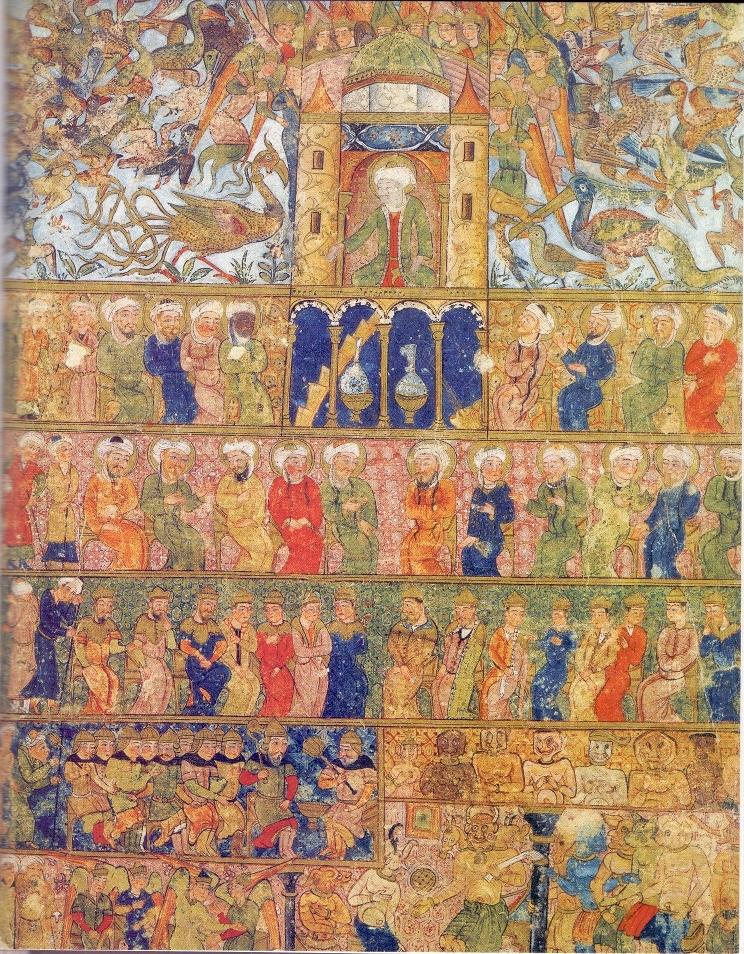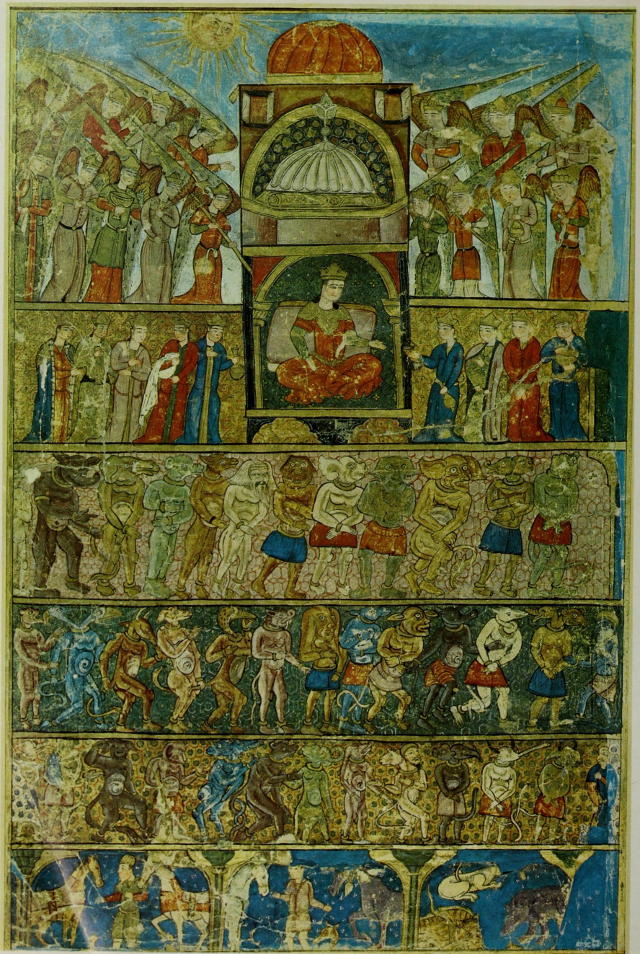
Shop Amazon - Create an Amazon Baby Registry
Frontispieces of a 15th-century Ottoman Sulayman-Name
A larger image of the frontispiece of Sulayman-Name T 406, f.1v. Chester Beatty Library. A detail of the seated Ottoman Soldiers in Sulayman-Name T 406, f.1v. Chester Beatty Library. The frontispiece of the fine 15th-century Ottoman manuscript Sulayman-Name. At the top sits Prophet Sulayman, known as King Solomon to Christians. Around and below him are attendants, and even monsters. Sulayman wears the costume of an Ottoman sultan. The fifth row depicts the Prophet-King's army. Two officers carry maces, one flanged, the other a transitional Turkish animal-headed style. (T 406, f.1b. Chester Beatty Library, Dublin)
A larger image of the frontispiece of Sulayman-Name T 406, f.2. Chester Beatty Library. |  70. Frontispiece painting from a copy of Firdusi's Sulayman-nameh, probably made for Sultan Bayazid II (1481-1512), from Bursa, Turkey. c. 1500, King Sulayman (Solomon enthroned). 9⅞ x 7˝ in. (25 x 19 cm.). Chester Beatty Library, Dublin. The upper part of the painting shows Sulayman seated upon his throne which is surmounted by a dome. He is surrounded by attendants and angels. Below his throne, in three registers, are various monstrous beings that appear to be in his service. At the bottom of the painting in the last register are what appear to be the royal stables. The introduction of monstrous beings into Sulayman's entourage is particularly interesting in view of the possible interpretation of some Herat paintings of about a century earlier (see plate 55). The painting is one of the earliest to have come down to us from the Ottoman court school in Istanbul. |
